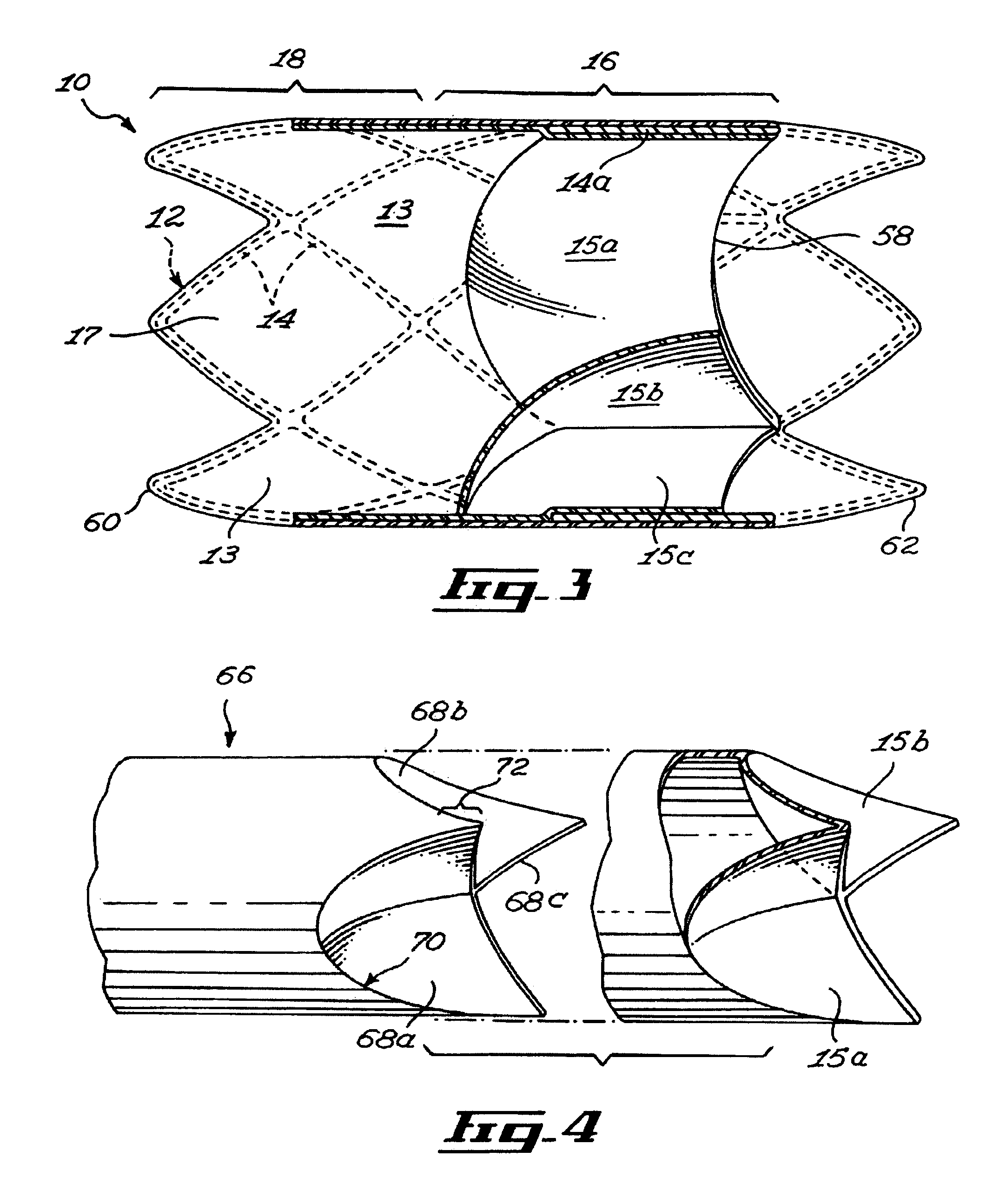Stent and method of manufacturing same
a technology of stents and manufacturing methods, applied in the field of stents, can solve the problems of tearing the stent, wires moving with respect, and the stent creates weaknesses in the sheath, and achieves the effects of easy manufacturing and operation, large resistance to radial compression, and easy positioning
- Summary
- Abstract
- Description
- Claims
- Application Information
AI Technical Summary
Benefits of technology
Problems solved by technology
Method used
Image
Examples
Embodiment Construction
[0042]FIG. 3 shows a stent 10 insertable in a body lumen (not shown in the drawings), the stent 10 defining a stent longitudinal axis. The stent includes a scaffold 12, a sheath 13 and valve leaflets 15, 15a and 15b. The sheath 13 and the valve leaflets 15a, 15b and 15c are mounted to the scaffold 12.
[0043] The scaffold 12 includes a scaffold passageway 17 that extends substantially longitudinally through the scaffold 12. The valve leaflets 15a, 15b and 15c extend at least partially across a scaffold passageway 17.
[0044] Referring to FIG. 1, the scaffold 12 includes interlinked struts 14 forming the scaffold first section 16 and a scaffold second section 18. The struts 14 are any suitable substantially elongated members interconnected in any suitable manner. For example, the struts 14 each include a substantially elongated metallic member of substantially uniform cross-section, the struts 14 extending integrally from each other. In other embodiments of the invention, struts are se...
PUM
 Login to View More
Login to View More Abstract
Description
Claims
Application Information
 Login to View More
Login to View More - R&D
- Intellectual Property
- Life Sciences
- Materials
- Tech Scout
- Unparalleled Data Quality
- Higher Quality Content
- 60% Fewer Hallucinations
Browse by: Latest US Patents, China's latest patents, Technical Efficacy Thesaurus, Application Domain, Technology Topic, Popular Technical Reports.
© 2025 PatSnap. All rights reserved.Legal|Privacy policy|Modern Slavery Act Transparency Statement|Sitemap|About US| Contact US: help@patsnap.com



